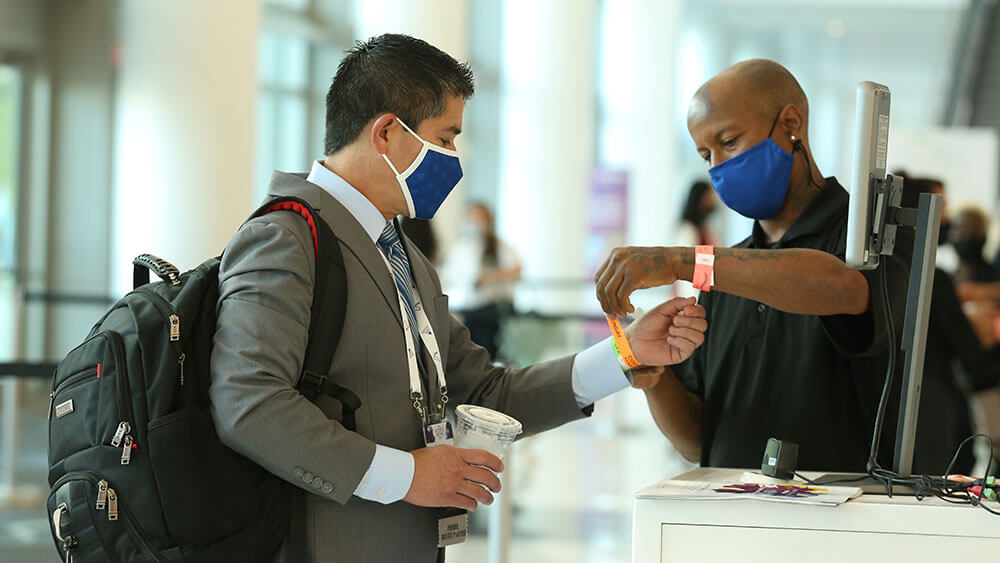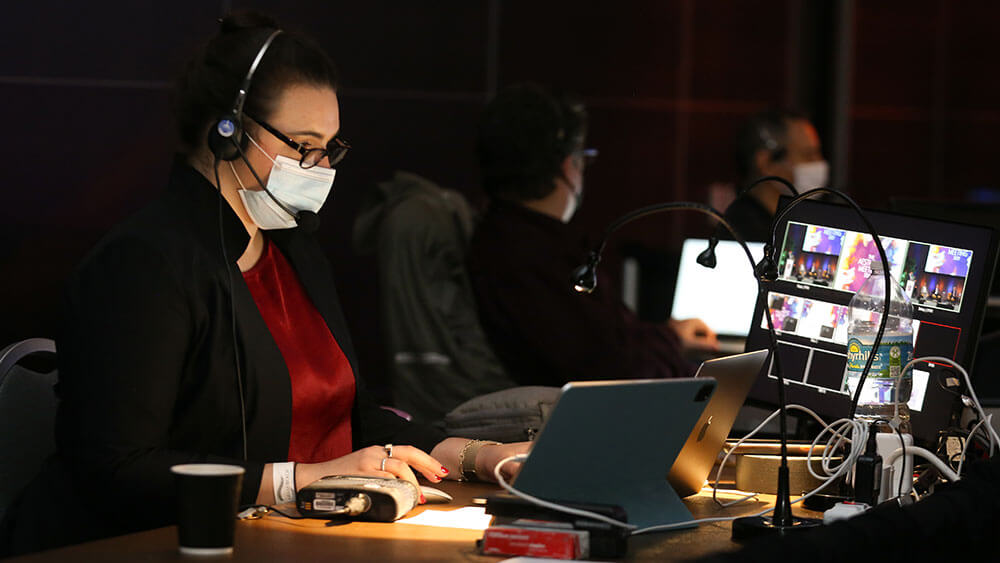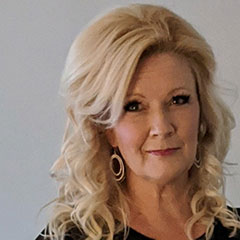
An attendee checks in for The Aesthetic Meeting 2021 at the Miami Beach Convention Center. The Aesthetic Society required all attendees — whether vaccinated or not — to wear masks. (Photos courtesy Greater Miami CVB)
When The Aesthetic Meeting 2021 — the signature annual event of The Aesthetic Society — convened at the Miami Beach Convention Center in early May, the hybrid event was remarkable for several reasons. Perhaps most surprising, though, was its pricing model: Organizers charged the same registration fee for virtual attendees as on-site attendees.
“My dream would be for everyone to adopt that pricing model,” said Sue Dykema, CAE, executive director of The Aesthetic Society and the Aesthetic Surgery Education and Research Foundation (ASERF). “People tend to think virtual should be ‘less expensive,’ but the cost to offer virtual is above and beyond normal audiovisual expense and adds cost for the organizer.”

The Aesthetic Meeting 2021’s welcome reception took place at the Loews Miami Beach hotel — one of several off-site venues the group took over in Miami Beach for social functions, including Dolce, The Betsy, The Temple House, and The Villa.
Held at the Miami Beach Convention Center from April 29 to May 3, the in-person meeting saw 714 attendees while the virtual program attracted slightly less — 515. The meeting’s exhibition, the Aesthetic Marketplace, hosted 972 exhibitor representatives from 119 companies. In addition to the exhibition, the program included educational sessions, various symposia, and social functions.
According to Dykema, this pricing model had several benefits for attendees as well as the organization. It gave attendees the ability to easily change their registration from virtual to in-person, or vice versa, if their comfort level changed. This is “all part of our ‘Your Choice’ positioning,” she said. Attending virtually allowed participants to save on travel and hotel costs, while attending in-person gave them the added benefit of networking with colleagues.
“The value of our education is the same and we did not want to diminish that by offering lower fees for virtual participation,” Dykema said.
Since pivoting its live annual meeting in April 2020 to digital in less than two weeks, the organization has found the virtual landscape to be “very successful.” The Aesthetic Society has hosted a series of virtual events since then with partner Digitell, which also produced The Aesthetic Meeting 2021.
“So when we were looking ahead to 2021 and what was possible … we really wanted an in-person event and it was just obvious we had to offer hybrid,” she said.
That meant making some changes to make sure that both audiences were getting the most out of the experience. For example, this year organizers asked all presenters to speak live at the meeting. “This certainly made the educational experience for both in-person and virtual [attendees] more robust and allowed for discussion that we typically don’t see when speakers present remotely,” Dykema said.

One major lesson learned from managing a hybrid experience — dedicate a staff to overseeing the virtual component. “Because when you’re on site, you just don’t have time to deal with that virtual audience,” said Sue Dykema, CAE, executive director of The Aesthetic Society.
Roadmap to Success
Perhaps the biggest hurdle for Dykema and her team was how to navigate the on-site experience, specifically health and safety. For Kathleen McClemmy, CMP, director of meetings at the Aesthetic Society, that roadmap was not easily drawn.
The team chose not to require proof of vaccination or testing at the event, instead opting to require masks at all times (except while eating or drinking) and daily health screenings for all attendees, exhibitors, and staff members prior to entry. According to data from those screenings, 89 percent reported being fully vaccinated.
Other on-site safety measures included temperature checks and contact tracing. Many of the spaces also were reconfigured to allow for ease of movement and physical distancing. For example, the Aesthetic Marketplace featured wider aisles and reconfigured entry and exit points to keep traffic flowing, as well as expanded F&B areas with signage directing attendees to stay seated while eating or drinking.
Those measures are just a snapshot of the complete plan. The team’s official “Health Care/Safety Plans and Protocols” for the meeting totaled 40 pages in length.
“Pre-planning, without a doubt, was challenging,” McClemmy said. “No one can profess, no matter how experienced you are, that you know what you’re doing in this scenario. You don’t have a clue.” She credits having supportive partners as key to making it over the hump.

Things that you used to worry about, you did not worry about this time. I don’t really care if the linen is white and not black. Those were kind of things you would obsess about before — now it’s not even a topic of conversation.”
Once on site, the ride got easier, she said. After they wrapped the health screenings, “it was a typical meeting,” McClemmy said. “Up until literally the morning of [the event] I was still sweating, like, ‘how are we going to keep people distant at a reception?’ Well, you know what? You can’t. I think we learned that perfection in this environment was not attainable, and so you had to change your idea of what success looked like. Success was making sure no one got sick. Everything else was kind of a bonus after that.”
Jennifer N. Dienst is managing editor at Convene.
